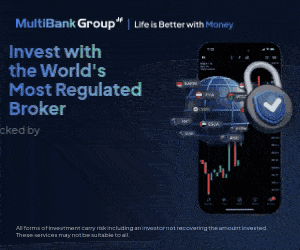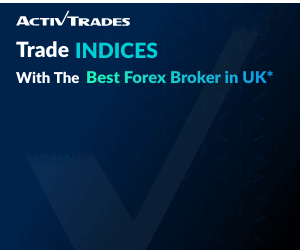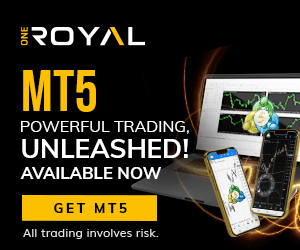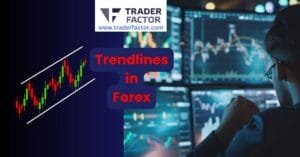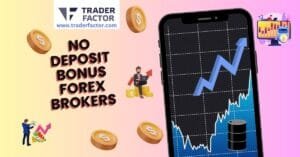Forex trading, a complex yet captivating financial market, is filled with various terminologies that you, as a trader, must understand to navigate successfully. One such term, the ‘Free Margin,‘ plays a crucial role in your trading journey.
Essentially, free margin in forex refers to the amount of money in your trading account that is available for placing new trades. It’s calculated by subtracting the used margin (the funds locked up to maintain open positions) from the equity (the total value of your account). This concept not only helps you manage your risks but also influences your trading strategies.
While free or margin trading might seem straightforward, its implications are far-reaching and warrant an in-depth exploration. Thus, this discussion will delve into the nuances of free margin in forex, explaining how to calculate it, its significance, and its impact on your trading decisions.
Table of Contents
ToggleOverview: Free Margin In Forex
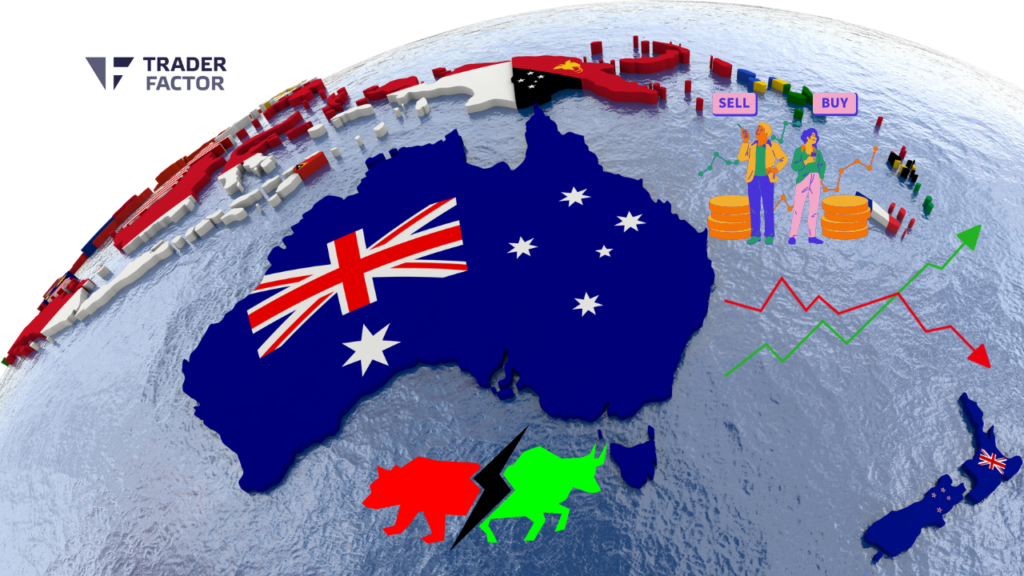
Understanding free margin in forex trading is crucial for managing your risks and influencing your trading strategies. The free margin refers to the amount of money in a trader’s account that isn’t tied up in margin for current open positions. It’s sometimes referred to as “usable margin” because it represents the funds available to open new trades.
To calculate the free margin, you subtract the used margin (the funds locked up to maintain open positions in margin accounts) from the equity (the total value of your account).
For instance, if the total value (equity) of your account is $10,000 and the used margin (funds distributed to keep your open positions) is $2000, your free margin would be $8000. This is the amount maintenance margin you have at your disposal to open new trades.
Let’s consider an example with major currency pairs.

Suppose you have an open position in EUR/USD that requires a margin of $1000. If your account equity is $5000, then your free margin is $4000 ($5000 – $1000). This means you have $4000 available to open new positions.
Understanding the concept of free margin can help you avoid margin calls (a demand by a broker for an investor to deposit additional money or purchase securities, to cover possible losses) and effectively manage your risk exposure in the volatile forex market.
Remember, successful forex trading isn’t just about identifying opportunities; it’s also about effective risk management. Keeping an eye on your free margin helps ensure you have enough capital to handle price fluctuations and continue trading.
Key Components of Your Forex Trading Account
Understanding the various components of your trading account is crucial to your success in forex trading. Each element has a unique function and plays a critical role in how you manage risk, make profit, and navigate your trading decisions.

Account Balance
Your trading account balance is the total sum of money in your trading account, excluding any profits or losses from open trades. It’s essentially the net result of all your deposits and withdrawals.
For instance, if you deposit $10,000 into your trading account and have yet to make any trades, your initial investment account balance stands at $10,000. This balance will fluctuate as you begin to execute trades and either incur losses or make profits.
Equity
Equity in a forex trading context refers to the total value of an account, including both the account balance and the unrealized gains or losses from any open trades. For example, if your account balance is $10,000 and you have an open GBP/USD position that’s currently up by $2000, your equity would be $12,000. Understanding your equity is vital as it gives you a real-time valuation of your account.
Margin
Margin is the amount of your own money that is set aside and “locked up” when you open a trade. It acts as a kind of insurance for the broker in the event the market moves against your position. For instance, if you’re trading with a leverage of 1:100, and you open a $50,000 trade on the USD/CAD pair, the initial margin call requirement would be $500. This $500 is then not available for other trades until the current one is closed.

Free Margin Account
Free margin is the remaining amount of money left in your trading account that you can use to open new trades. It’s calculated by subtracting the used margin (the money locked up in maintaining open positions) from your equity. For example, if your equity is $12,000 and the used margin is $2000, your free margin is $10,000. This amount can be used to open new positions.
Used Margin Trading
Used margin is the total sum of money that’s currently being utilized to maintain your open positions. If you have a margin loan for multiple open trades, your used margin would be the cumulative sum of the margins for each trade.
Margin Level
Margin level is a percentage calculated by dividing your equity by the used margin and then multiplying by 100. This figure indicates how much of your used margin is covered by your account’s equity. It’s an important indicator of the health of your account and can help you avoid a margin call.
Leverage
Lemarginverage in forex trading is a tool that enables you to control larger positions with a smaller amount of money. It’s expressed as a ratio, such as 1:100, meaning you can control a $10,000 position with just $100. While leverage can amplify profits, it can also magnify losses, so it must be used carefully.

Margin Call
A margin call occurs when your broker demands that you deposit more money into your account to sustain your open positions. This typically takes place when your margin level drops below a certain threshold, like 100%. It’s essentially a warning that you don’t have enough equity to cover the potential losses of your open trades.
Stop Out Level
The stop out level is the point at which your broker will start automatically closing your open positions to prevent further losses. This usually happens when your margin level drops even lower, often around 50%. It’s the broker’s way of protecting itself from clients not being able to fully paid back the borrowed money.
Pip Value
Pip value is the worth of a single pip (the smallest price move) in your currency pair. It varies depending on the size of your trade and the currency pair you’re trading. For example, if you’re trading 100,000 units of EUR/USD, the pip value might be $10. Knowing the pip value can help you manage risk effectively.
Position Size
Your position size is the number of units of a currency pair you’re buying or selling in a single trade. For example, if you’re trading EUR/USD and you buy 50,000 units, your position size is 50,000 EUR. Understanding position size is crucial as it directly impacts your risk level and potential profit or loss on each trade.
Calculating Free Margin
As a forex trader, understanding how to calculate your free margin is crucial. It’s the total amount of money in your account that remains available for opening new trades.

Let’s break down how you can calculate it step by step.
Calculate Equity
First, you need to determine your equity. Your equity is the total value of your trading account, which includes your account balance and any unrealized profits or losses from open trades.
The following formula for calculating equity is:
Equity = Account Balance + Unrealized Profits – Unrealized Losses
For example, suppose your account maintenance requirement or balance is $10,000. You have an open trade on the EUR/USD pair, which currently has an unrealized profit of $500. In this case, your equity would be:
Equity = $10,000 (Account Balance) + $500 (Unrealized Profit) Equity = $10,500

Determine Used Margin
Next, you need to calculate the used margin. This is the amount of money currently locked up as collateral for your open trades. Your broker will provide this information on your trading platform.
Let’s say you have two open trades. One requires a margin of $200 and the other $300. Therefore, your used margin would be:
Used Margin = $200 (Margin for first trade) + $300 (Margin for second trade) Used Margin = $500
Calculate Free Margin
Now you’re ready to calculate your free margin. The free margin is the difference between your equity and the used margin.
The formula for calculating free margin is:
Free Margin = Equity – Used Margin
Using the figures from our examples above, your free margin would be:
Free Margin = $10,500 (Equity) – $500 (Used Margin) Free Margin = $10,000

This means you have $10,000 left in your margin maintenance requirement account to open new trades. Monitoring your free margin is essential as it allows you to see at a glance how much of your capital is available for new trades. It also helps you manage your risk and avoid margin calls.
Impact of Different Leverage Levels on Free Margin
Understanding the impact of different leverage levels on your free margin is crucial for successful forex trading. Leverage can be a powerful tool, but it also carries more risk if not managed properly.
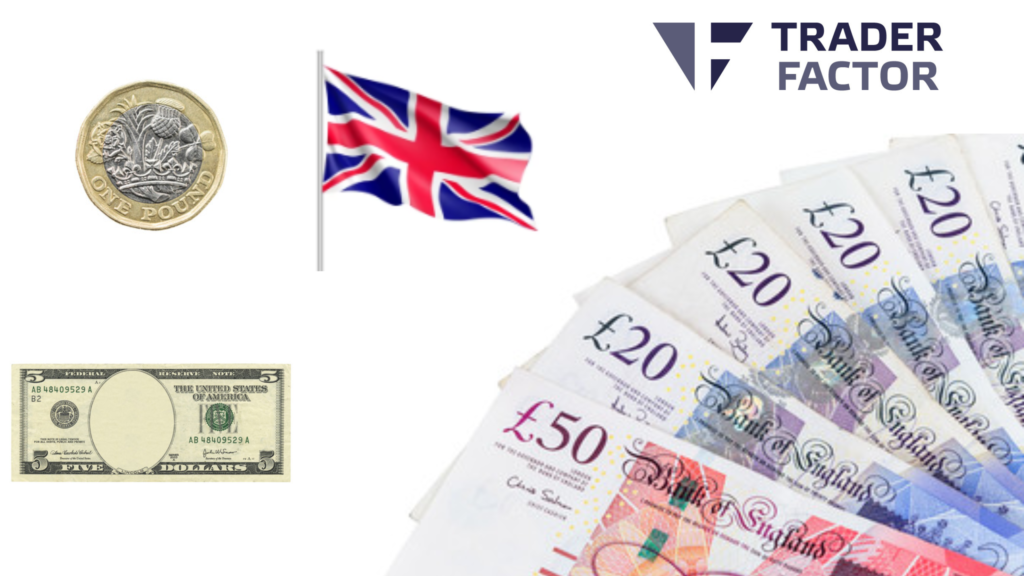
Margin is the amount of money that a trader needs to put up as collateral to open a position.
Let’s explore how different levels of leverage can affect your forex free margin here.
Low Leverage (e.g., 1:10)
Low leverage, such as 1:10, means that for every dollar in your maintenance requirement account, you can control $10 in a trade. This level of leverage provides a lower risk, but also lower potential returns. For example, if you have an account balance of $1000, you could control a single position up to $10,000.
If you open a trade using all your available margin agreement no leverage, your used margin will be $1000 (10% of the trade size), leaving you with no free margin. However, any losses you incur will be relatively small compared to higher leverage levels. This means you’re less likely to receive a margin call, as your equity won’t decrease as rapidly if trades go against you.

Moderate Leverage (e.g., 1:50 to 1:100)
Moderate leverage levels, such as 1:50 or 1:100, offer a balance between risk and potential returns. With a leverage of 1:50, for example, you could control a $50,000 position with just $1000 of your own money.
Using the same account balance of $1000, if you enter a trade using all your available leverage, your used margin will be $1000, and your free margin will be zero. However, as the leverage is higher, the potential for both profit and loss is greater. If the market moves against you, your equity (and therefore your free margin work) may decrease quickly, increasing the risk of a margin call.
High Leverage (e.g., 1:500 and above)
High leverage levels, such as 1:500, mean that for every dollar in your account, you can control $500 in a trade. This allows for potentially significant profits from relatively small price movements. However, the risk is also significantly higher.
Using an account balance of $1000 as an example again, with a leverage of 1:500, you could control a position up to $500,000. If you open a trade using all your available leverage, your used margin will be $1000, leaving no free margin. The potential profits could be substantial if the market moves in your favor.
However, if the market moves against you, even a small adverse price change could lead to substantial losses. This would quickly eat into your equity, reducing your free margin and increasing the likelihood of a margin call. Therefore, while high leverage can provide significant profit opportunities, it should be used with caution due to the increased risk.

Maintaining Positive Free Margin
Maintaining a positive free margin is crucial to your trading success. It ensures that you have enough capital to open new trades and manage your existing ones effectively. Here’s how you can maintain a positive free margin:
Set Realistic Leverage
Using the right leverage level is key to managing your free margin. High leverage can offer greater profit potential, but it also increases the risk of losses, which could quickly deplete your free margin. Consider starting with lower leverage levels, such as 1:10 or 1:20, and gradually increase as you gain more experience and confidence.
Use Stop Loss Orders
Stop loss orders automatically close your trade when the market price reaches a certain level. This helps limit your losses and protect your free margin. For example, if you’re long on EUR/USD at 1.2000, you might set a stop loss order at 1.1980 to limit your loss if the market moves against you.
Diversify Your Portfolio
Diversification can help manage risk and protect your free margin. Instead of putting all your money into one trade, consider spreading it across different currency pairs or markets. This way, if one trade goes against you, the losses may be offset by gains in other trades.
Monitor Margin Level
Regularly checking your margin level can help prevent margin calls and protect your free margin. If your margin level gets too close to the broker’s stop out level (often around 50%), consider closing some trades or adding more funds to your account.

Avoid Overleveraging
Overleveraging means using too much of your available leverage, which can lead to large losses and quickly deplete your free margin. Try to use only a portion of your maximum leverage, leaving a buffer in your free margin to accommodate any market fluctuations.
Regularly Review Trades
Regularly review your open trades to ensure they’re still in line with your trading strategy and risk tolerance. Close any trades that are not performing as expected to protect your free margin.
Adjust Trade Sizes
Consider adjusting your trade sizes based on your free and margin requirements. If your free margin is low, consider reducing your trade size to limit the required margin and risk.
Risk-Reward Ratio
Aim for a positive risk-reward ratio, where the potential profit is greater than the potential loss. This can help ensure that even if some of your trades are unsuccessful, the successful ones can still result in a net gain, helping maintain your free margin.
Stay Informed
Stay informed about market news and events that could impact your trades. This can help you anticipate market movements and manage your trades accordingly to protect your free margin.

Continuous Learning
Lastly, always strive to learn more about forex trading. The more you understand about trading strategies, risk management, and market analysis, the better you’ll be able to manage your free margin. Consider taking online courses, reading books, or joining trading forums to expand your knowledge.
Trading with Free Margin: Maximizing Opportunities and Managing Risk

Trading with free margin entails striking a balance between seizing opportunities and managing risk. Here are some strategies to help you maximize opportunities and manage risks when trading with free margin:
Opportunistic Trade Entry
Look for high-quality trade setups that align with your trading strategy. Don’t rush to enter trades just because you have free margin available. For example, if you’re a trend trader, wait for a clear trend to form before entering a trade, rather than jumping in on every small price movement.
Diversify Your Trades
Diversifying your trades can help spread your risk and protect your free margin. Consider trading different currency pairs, or even different markets like commodities or indices. For example, if you’re trading the EUR/USD pair, you might also consider buy securities, marginable securities, certain stocks or trading gold or the Dow Jones index to diversify your portfolio and this may translate to more cash.
Position Sizing Precision
Adjust your position size according to your free margin and risk tolerance. If your free margin is low, consider reducing your position size to limit risk. Conversely, if you have a large free margin and see a high-quality trade setup, you might consider increasing your position size.

Scaling In and Out
Consider scaling in and out of trades to manage risk and maximize profit potential. For example, you could enter a trade with a small position size, then add to it if the market moves in your favor. Similarly, you could scale out of a profitable trade by closing part of your position and letting the rest run.
Implement Trailing Stops
Trailing stop orders can help protect your profits and limit losses. They move with the market price, so if the market moves in your favor, the stop loss level also moves, locking in profits. If the market moves against you, the stop loss stays at its last level, limiting your loss.
Hedging and Correlation
Consider using hedging strategies to protect your free margin. This could involve taking offsetting positions in correlated markets. For example, if you’re long on the EUR/USD pair, you might go short on the USD/CHF pair, as these pairs often move in opposite directions.
Reinvesting Profits
Reinvest your profits back into your trading account to increase your free margin. This can allow you to trade larger position sizes and potentially earn more profits. However, remember to manage your risk carefully when trading larger positions.

Avoid Margin Calls
Monitor your margin level closely to avoid margin calls. If your margin level gets too low, consider closing some trades or adding more funds to your account. Always aim to maintain a positive free margin to give yourself room to maneuver in the market.
Monitor Market Conditions
Keep an eye on market conditions and adjust your trading strategy accordingly. If the market is volatile, you might need to reduce your position size or increase your stop loss distance to protect your free margin.
Continual Learning
Lastly, never stop learning. The more you understand about the markets and trading strategies, the better you’ll be able to manage your free margin and seize trading opportunities. Consider reading books, taking courses, or joining trading forums to continually expand your knowledge.
5 FAQs about free margin
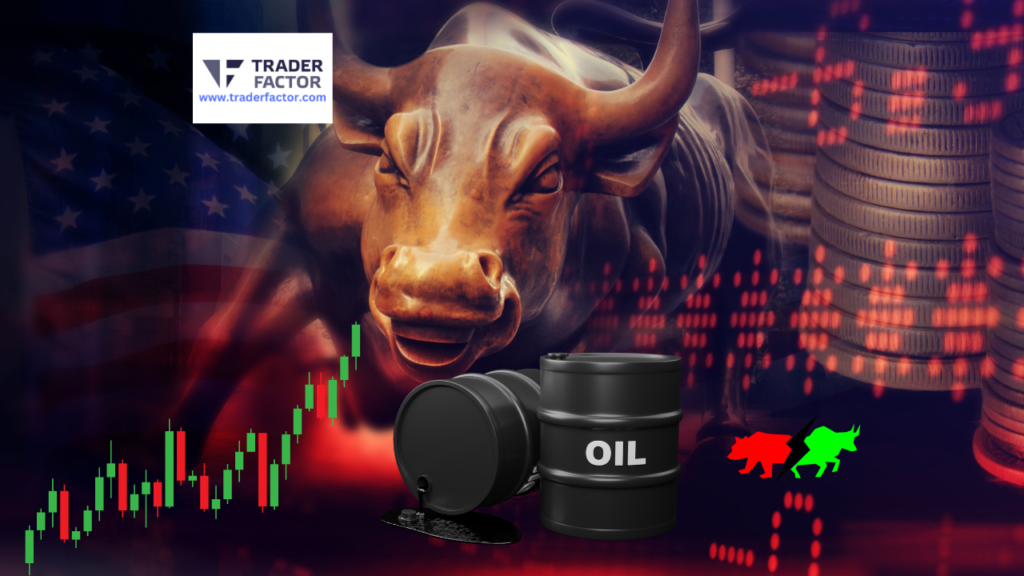
Is Free Margin Free Money?
No, free margin is not free money. It’s the amount of equity in your trading account that isn’t tied up in margin for current open trades. It’s the money you have available to place additional trades or to cover any negative price movements in your open trades.
How is Free Margin Calculated?
Free margin is calculated as Equity minus Used Margin. Equity is the total value of your trading account (your balance plus or minus any profit or loss from open trades). Used margin is the amount of money that’s currently used to maintain open positions.
Can I Withdraw My Free Margin?
Yes, generally you can withdraw your free margin, provided it doesn’t lead to a margin call. However, withdrawing funds reduces your free margin and could limit your ability to open new trades or maintain existing ones.
What Happens if My Free Margin Falls to Zero?
If your free margin falls to zero, it means all your account equity is tied up in margin for open trades. If your trades move against you further, you may receive a margin call, which is a demand from your broker to deposit more funds to maintain your open positions.

How Can I Increase My Free Margin?
You can increase your free margin by closing profitable trades (which increases your equity), closing losing trades (which reduces your used margin), or depositing more funds into your trading account.
What is the difference between Margin, Free Margin and Margin Level?
Margin is the amount of money required by a broker to maintain your open trades. It’s essentially a deposit, a part of your account equity set aside and allocated as a margin deposit.
Free Margin is the equity in a trading account that isn’t tied up in margin for current open positions. It’s the remaining balance of your equity that you can use to open new trades.
Margin Level is a percentage value calculated as (Equity / Used Margin) * 100. It indicates the health of your account. A high margin level means you have a high amount of funds available for new trades, while a low margin level might put you at risk of a margin call.

Disclaimer:
All information has been prepared by TraderFactor or partners. The information does not contain a record of TraderFactor or partner’s prices or an offer of or solicitation for a transaction in any financial instrument. No representation or warranty is given as to the accuracy or completeness of this information. Any material provided does not have regard to the specific investment objective and financial situation of any person who may read it. Past performance is not a reliable indicator of future performance.




